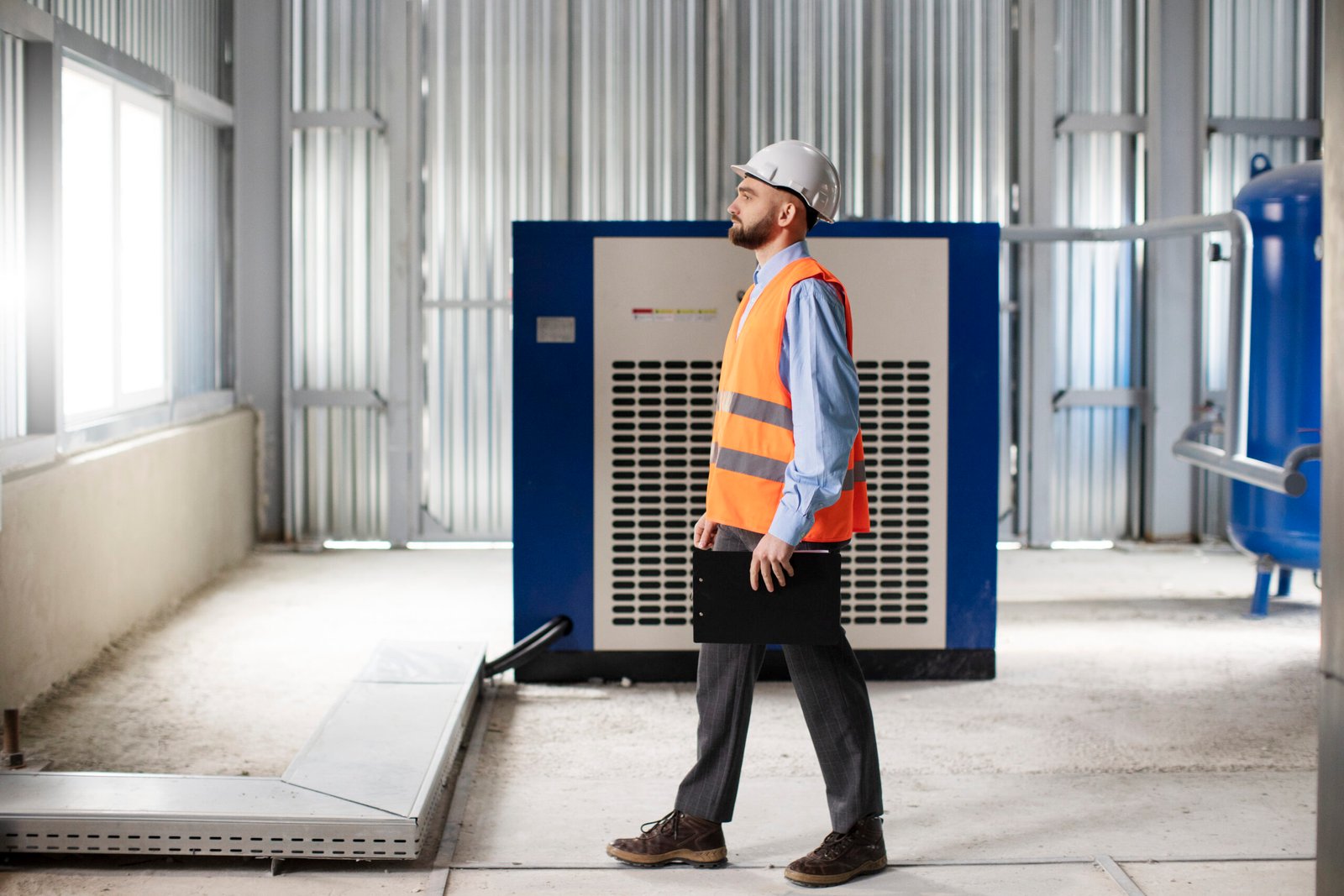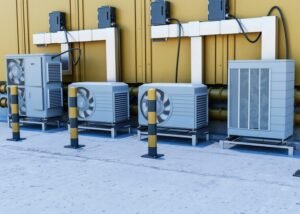Locating the best spot to put your air handler is a challenge. Many homeowners wonder, Where do I find the air handler inside the house? The quick answer: The air handler is typically installed in a space like the attic, basement, or utility room, where it can distribute conditioned air efficiently throughout the home. The placement of the air handler plays a crucial role in the efficiency of your HVAC system, impacting energy bills and overall comfort. Now, let’s dive deeper into understanding where and how to install your air handler for maximum efficiency.
What is an Air Handler?
However, it is important to know the definition and features of an air handler before we talk about where you should install it for optimal performance. What is an air handler: In the indoor portion of your HVAC system, the air handler distributes and controls airflow in your home. Compressors, Heating as well as cooling coils in addition to dampers are all elements that can be located within an ac unit. The system assists your heat pump or air conditioner in sustaining the indoor temperatures at a level that is comfortable to you.
Air Handler Features
Blower Motor: This motor moves air through the ducts and into your living spaces.
Evaporator Coil: This device plays a role in cooling and/or heating the air moving through your home.
Filters — Helps capture dust and other airborne particles to help improve overall indoor air quality.
Dampers: Control airflow and direct the air where you want it in your house.
The precise arrangement of the air handler helps in guaranteeing that airflow is kept up consistently over every degree of your homes, expanding the productivity of your HVAC units.
Some Things to Know Before Installing Your Air Handler
1. Available Space
The air handler should be installed in a space large enough so that it can easily be accessed for filter replacement and regular maintenance. Before installing a new water heater, ask yourself how much space you have in the attic or basement (if those are your preferred locations) and if not enough room is available consider commercial hot water systems. Also, the clearance between your hot water heater and its surroundings is very important for heat dissipation as well as for performing maintenance tasks like changing filters or inspecting various components.
2. Accessibility
First up, one of the most important things: Can you GET to the air handler. It should have accessible regular maintenance, such as a filter change or repairs. Do not put the air handler in hard-to-reach cramped spaces.
3. Temperature Control
When you put it outside in the elements and where they rust, mold… feel good? Do not install in a location that is too hot or cold, (ie: garage or outdoor space)- unless the unit was designed for those conditions.
4. Ductwork Layout
The air handler should be placed centrally in reference to the ducts. This is because if you place this too far away from your ducts, then it can also lead to uneven heating and cooling making some rooms either cold or hot. Correct installation ensures that the air sender releases heated or cooled air consistently across your entire building.
5. Noise Levels
With the potential to produce noise when in operation, your air handler could easily be a device that testifies well it would not remain unnoticed around certain parts of the home. If you have an open-floor plan or sleep in areas near your proposed air handler site, select a space that will reduce noise intrusion.
6. Construction Codes
Be sure to check local building codes and regulations for installation. Some places for example have requirements that dictate where different parts of your HVAC system, such as the air handler can be placed. An HVAC installer will know these regulations to the dot, whereas you may have never heard of them since they barely get revised in decades.
Ideal Places for Air Handler Installations
Now we have reviewed these aspects, it is time to discover the best locations for installing air handlers.
1. Attic
The attic is probably the most overused location of air handlers. If the attic is insulated and ventilated, placing an air handler in it can be very energy-efficient. For the best performance out of this setup, it requires the centralization from above to evenly distribute conditioned air throughout your house. Attic installations also keep the unit outside of living spaces, saving indoor space.
Finally, it does have some disadvantages as well. Hot summers or frigid winters can wreak havoc in an attic. Insulation is important so that temperature fluctuations will not occur, ensuring the system functions properly. The attic space must be protected from freezing temperatures in colder climates.
Pros:
- Frees up indoor space.
- Even Air Distribution — as the centralized location.
Cons:
- Hot or Cold conditions
- More difficult to reach for maintenance
2. Basement
The basement is also a common place to put in an air handler. It is easy to maintain partly because of access and less susceptible to wide temperature swings. This is because basements are typically cooler than attics, thus making your HVAC system operate in a more efficient way – particularly during the warmer months of spring and summer.
But unless you have ductwork that runs under the floor, it’s not easy to do a basement installation. However, this placement could be less efficient if your ductwork is overhead. Also, if your basement is designed to flood every once in a while, or really floods from time to time, you might need some additional safety precautions on the system.
Pros:
- Easy access for maintenance.
- Maintain Even Temperatures
- Less noise disruption.
Cons:
- Might not be ideal for homes with overhead ductwork.
- Vulnerable to flooding in some regions.
3. Utility Room
The air handler could be placed in a utility room inside the house. This ensures that the air handler remains easily accessible, and out of harsh weather conditions. A utility room also tends to offer better temperature control than attics or basements, which equates to improved HVAC efficiency.
However the space can be a limitation in some homes. The air handler and the regular maintenance it requires may not have enough clearance in a utility room. You will have to make space for air ventilating.
Pros:
- Sheltered from King Joffrey and The Mountain
- Lower maintenance and repair costs.
Cons:
- Lack of space leads to air circulation restrictions.
- May consume a large amount of storage
4. Crawl Space
A crawl space in some homes can allow the air handler to be used down there. Crawl spaces are typically insulated near the ductwork, which can lead to more consistent airflow throughout a home. But crawl spaces by their very nature are small and hard to maintain. It is also necessary for ventilation and controlling the dampness so that the system does not get damaged.
Pros:
- One area for the most convenient way to send conditioned air
- Hidden and by this saving indoor space.
Cons:
- Not easily accessible for maintenance
- Problems with Moisture and Humidity
Get the Most Out of Your Air Handler
When you locate the ideal spot to put your air handler, here are some extra tips to help increase efficiency.
1. Regular Maintenance
Periodic maintenance check-ups will help ensure that your air handler is running at peak efficiency. This means changing out filters, cleaning coils and checking for air leaks or duct damage. When you disregard maintenance, your system will become less efficient and that means higher energy bills for you, plus the possible need for expensive repair work.
2. Proper Insulation
Always make sure your air handler is well-insulated in the area around it. This is extremely important for attic installations where temperature extremes can impact the performance of your system. The temperature of the conditioned air can be properly maintained by insulating your ductwork.
3. Install Zoning Systems
This is where a zoning system comes in, it separates your home into different areas or “zones” that can be controlled independently. The zoning operator allows you to provide heating or air conditioning settings differently for the specified area of your house which in turn reduces energy usage throughout. To ensure the device works most effectively with a zoning system, proper air handlers need to be purchased.
4. Use Programmable Thermostats
A programmable thermostat is the best way that you maintain a normal temperature depending on your schedule in the home. This takes some of the pressure off your air handler, particularly when you leave the house. You can also have the system run less often during the day and only cool or heat when necessary.
Conclusion
Picking the right spot for this component is crucial to your HVAC system’s efficiency. They are possible solutions depending on the layout of your home and how easy or difficult it is to get those areas into a duck line. No matter what location you finally end up placing it, give consideration to selecting an area that’s effortless for the purpose of routine service transportation; insulated from a winter season’s tough breezes & chord with hometown regulations.
This will reduce the cost of energy bills, provide better comfort in your home and make sure you get full value out of your air handler. In summary, placing your air handler in the optimal location and regularly maintaining it is an easy way to ensure long-term energy efficiency.








